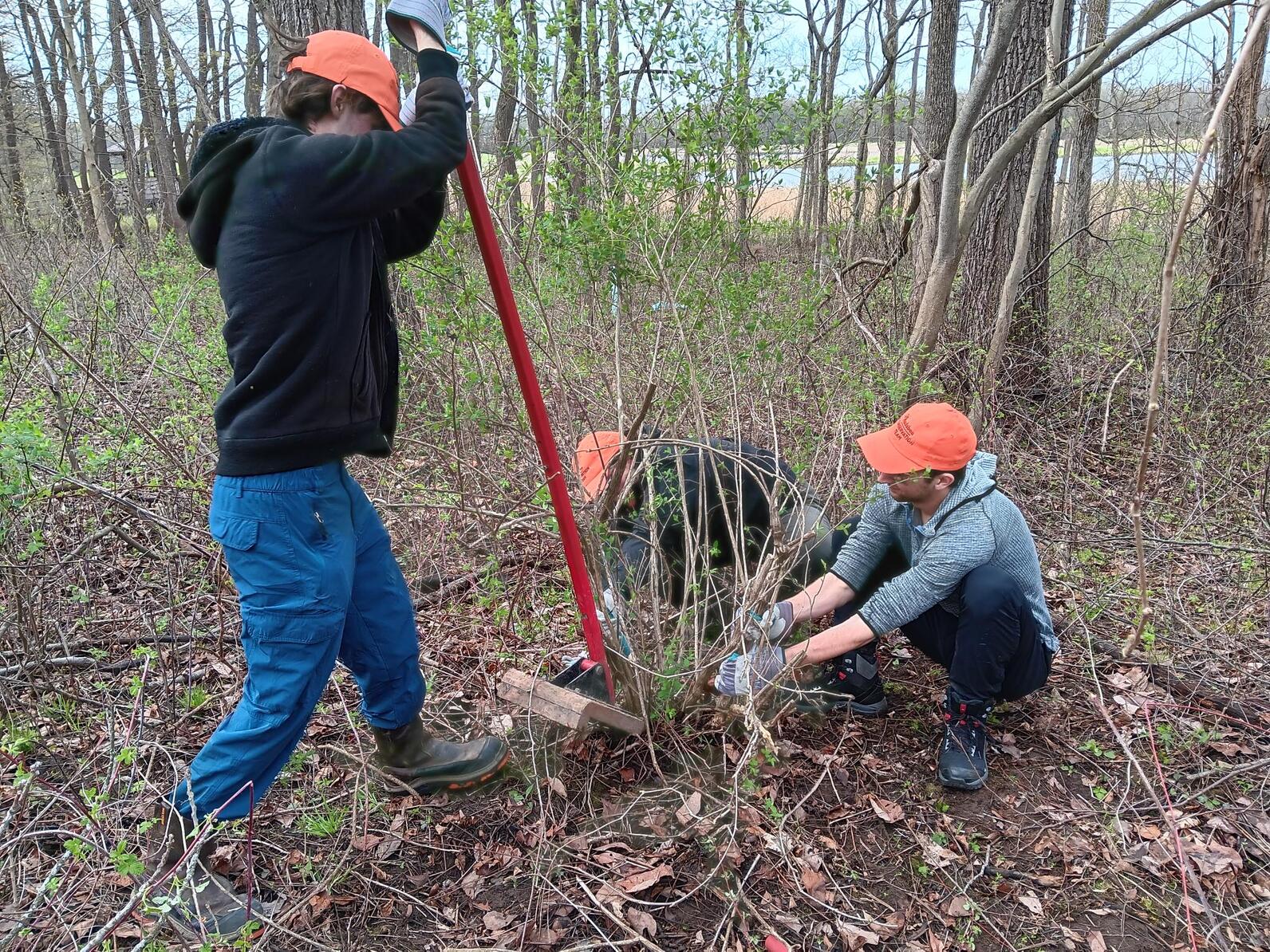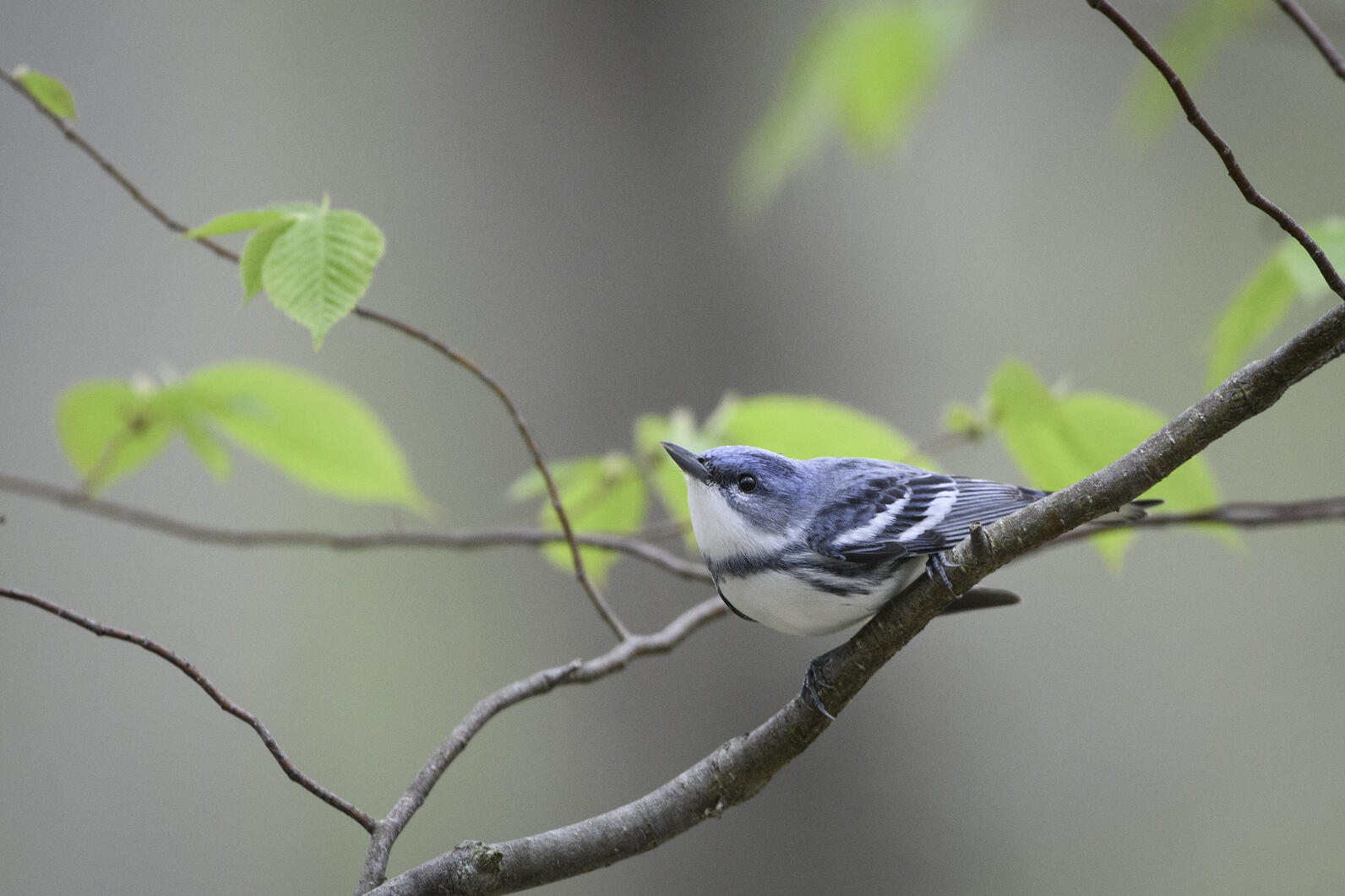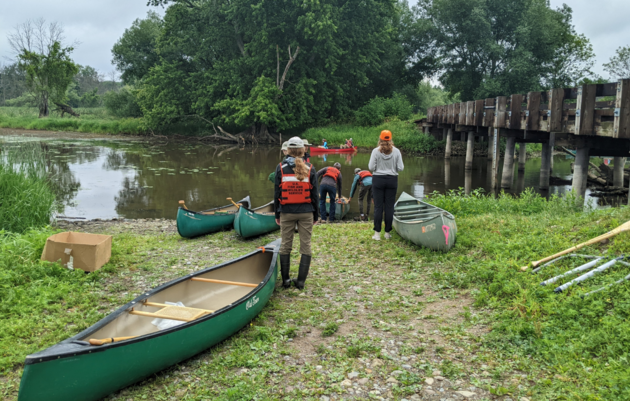Deep in the forest of the Montezuma Wetlands Complex in Savannah, NY, volunteers plant the pointed blade of a specialized extraction tool into the soil. With a forceful downward push, the tool’s long metal handle becomes a giant lever, prying stubborn roots from the ground. These volunteers are “honeysuckle popping”—a deceptively funny name for the hard work they’ve been putting in.
The bush honeysuckle these volunteers are removing is an invasive shrub species that originated in Europe. If left unchecked, it could easily choke out native plant life and take over a forest stand in the Montezuma Wetlands Complex. It’s why these volunteers are putting physics (and some serious muscle) to work popping out these plants and removing other invasive species. After removing the honeysuckle, volunteers plant native species in their place to keep more invasives from moving in.
Honeysuckle popping workdays at Montezuma are part of the Montezuma Alliance for the Restoration of Species & Habitats (MARSH!) program, a volunteer initiative supporting work by the New York State Department of Environmental Conservation, U.S. Fish and Wildlife Service, and Montezuma Audubon Center to protect and restore nearly 50,000 acres of habitat. Past MARSH! volunteers have included students from local high schools, Hobart and William Smith Colleges, SUNY College of Environmental Science and Forestry, and members of Friends of the Montezuma Wetlands Complex.

“At MARSH! events, we have a lot of fun and we get a lot of great work done,” said Chris Lajewski, director of the Montezuma Audubon Center. Chris also said an important part of the MARSH! program is the camaraderie built between volunteers and staff as they all share lunch together—thanks to the generous support of the Friends of the Montezuma Wildlife Complex—after a morning of hard work in the field. “This work is a team effort, and having that time to eat together, continue conversations, and keep learning from each other is very special. We truly develop great friendships while working together.”
All the hard work volunteer teams have put into prying up honeysuckle has paid off—in places where honeysuckle and other invasive species have been removed, native vegetation like Mayapple and trillium have begun to repopulate the forest understory.
“I can confidently say that this has improved the habitat quality for our priority bird species at Audubon. Prior to this project you couldn’t even see through the forest, it was so choked out with bush honeysuckle,” said Chris. “And now, after 15 years of this work, the native wildflowers and shrubs are flourishing.”
Two priority bird species that have especially benefitted are the striking Rose-breasted Grosbeak and Cerulean Warbler. After a few seasons of honeysuckle popping, a Cerulean Warbler couple moved into the forest. The species, which is threatened in the state of New York, has now been back to Montezuma every year for about a decade.

Heading into the fall, MARSH! volunteers will shift from honeysuckle popping to surveying vegetation and collecting seeds from native species. The seeds they collect now will be dried and stored until they can be planted to replace honeysuckle or other invasive species that have been removed. One pound of seeds collected by volunteers can restore as much as a quarter acre of habitat!
Though the physically demanding work of honeysuckle popping is winding down for the season, Chris said the Montezuma Audubon Center is always looking for volunteers who are interested in getting involved in the Center’s work. “Beyond just honeysuckle popping, we really want to be intentional and bring more of the community into Montezuma. No matter what someone’s interest or ability is in a certain area, we want them to know that there is a place for them here.”







